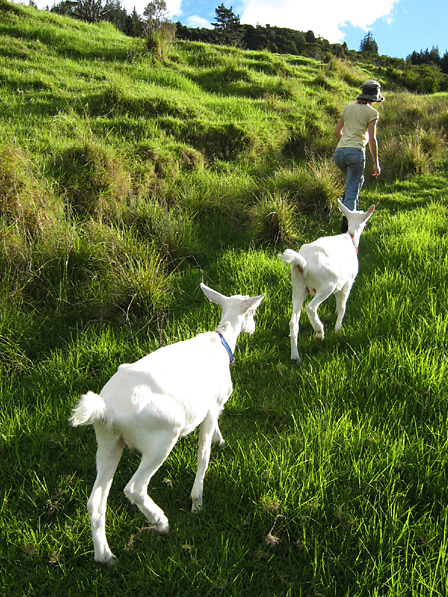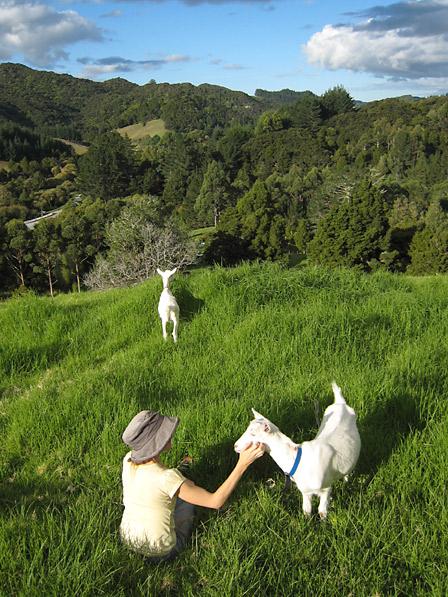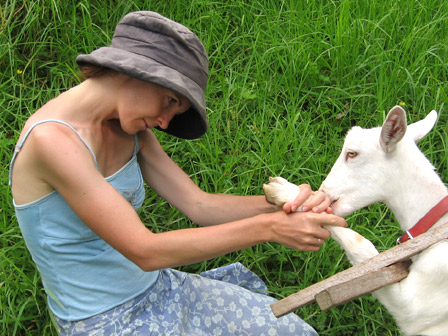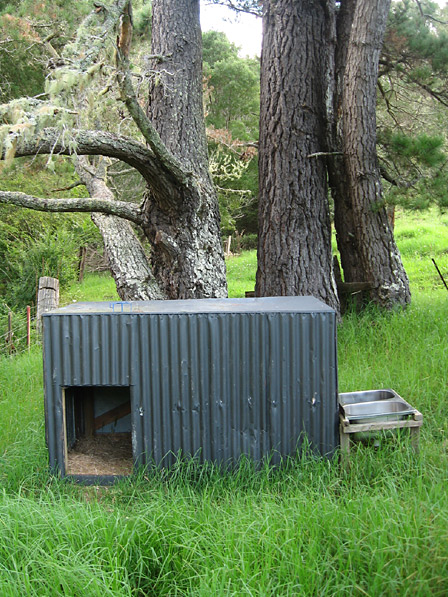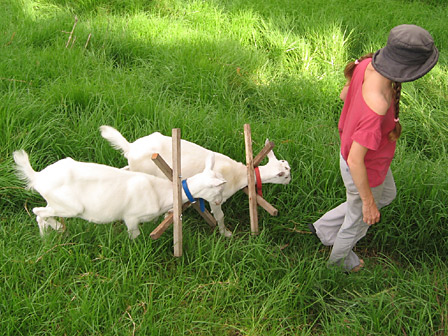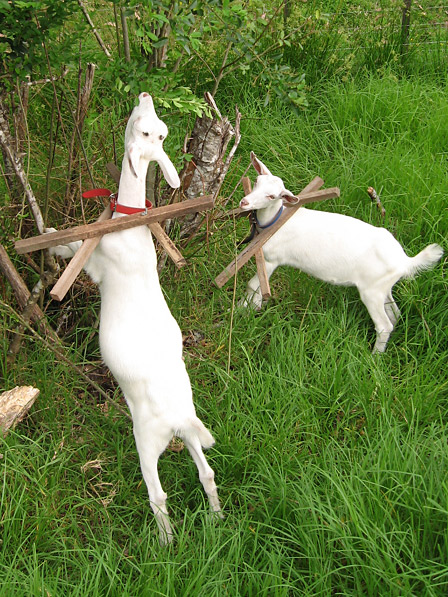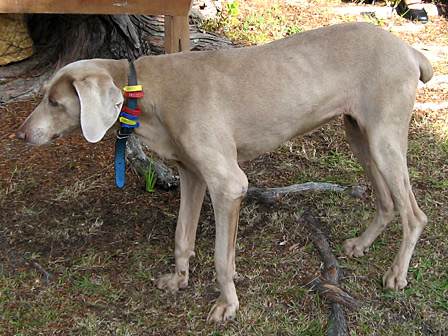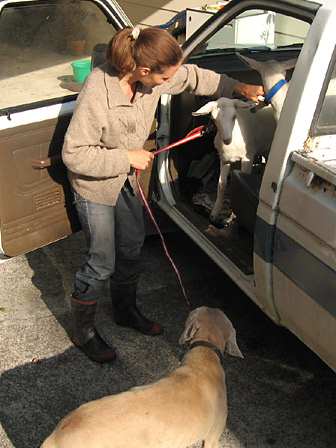The electric fencing around the top goat paddock is finally hooked up and working. Daphne and Lulu are learning what it means to live with a real fence! This project was completed none too soon, as Daphne had been escaping and had already totally trashed a young loquat tree in the orchard area. I was getting very sick of having to put her back in the goat paddock all the time!
The goats used to stick their necks through the fence as a matter of course, but have quickly learned that this is not a good idea. They do not like electric fences!
Kevin has been testing his ingenuity with the goat fence project. My Dad came over and helped tighten the existing wires of the fence, and roll out the new wires. Kevin devised some home-made insulators made out of old plastic irrigation tubing to stop the electric wires shorting out against the fence posts. These seem to be working very well, and have saved us a lot of money compared to buying ready-made insulators.

Satisfaction is 5000 volts running through your goat fence

It won’t win any beauty contests, but the goats are contained
Note from Kevin: If you do this, make your insulators longer than I did and strain your wire well.
The goats have been especially playful lately, despite not liking their new fence. Daphne loves to jump up onto the goat house in the top paddock. She capers around up there looking very pleased with herself. Lulu can’t (or won’t) jump up onto the goat house, but waits until Daphne gets down to start jumping at her and bunting. The two of them have mock goat fights, and tear around the paddock like mad creatures, doing twists and leaps and fancy stunts.

Daphne surveys the realm from the roof of the goat house; Lulu is jealous
We are glad we don’t have to put the wooden A-frame collars on the goats any more when they are in the top paddock. (They haven’t needed to wear them for a while in the lower paddock.) They are surely more comfortable without them, and it was a hassle for us to be taking them on and off all the time! We feed the goats on extra tree clippings (especially any privet that we clear out around the place), and weeds, prunings, and over-grown vegetables from the garden to supplement the forage in their paddocks. With these extra offerings, we hope they don’t suffer too much for having to stay in their paddock. Certainly, this arrangement is going to be much better for the little fruit trees we are hoping to plant.
